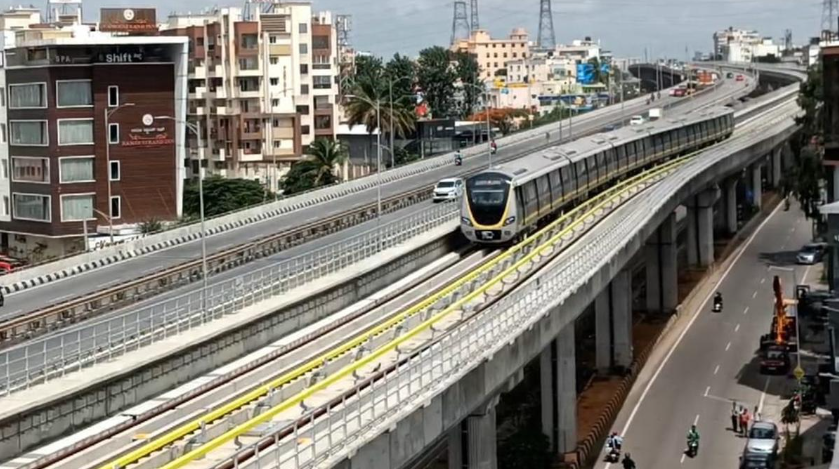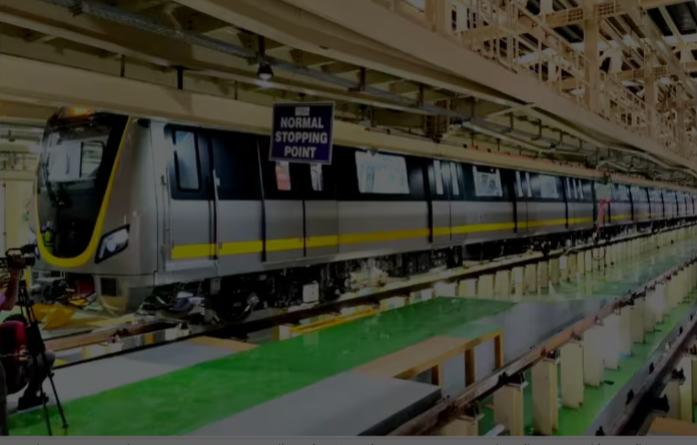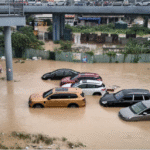Bengaluru Metro Sees much-anticipated metro expansion has encountered significant setbacks in 2024, Bengaluru Metro Sees with the Yellow Line’s opening being delayed yet again. The delays reflect persistent challenges faced by India’s Silicon Valley in enhancing urban infrastructure to meet its growing demands. The stalled progress underscores issues such as bureaucratic inefficiencies, funding shortfalls, Bengaluru Metro Sees and engineering hurdles that continue to slow the metro’s development.
As residents grapple with increasing traffic congestion and extended commutes, the delays add to public frustration, shining a light on Bengaluru’s pressing need for efficient urban transit solutions.
The Bengaluru Metro: A Brief Overview
Launched in 2011, Bengaluru’s Namma Metro represents an ambitious attempt to alleviate the city’s infamous traffic woes. Envisioned as a lifeline for one of the fastest-growing cities in the world, the metro project aims to provide seamless connectivity while reducing carbon emissions and dependency on road-based transport.
Currently, the network operates two main lines:
- The Purple Line, spanning 42.2 km and connecting the eastern and western parts of the city.
- The Green Line, stretching 30.6 km and running north-south.
Several new lines and extensions are part of Phase II and Phase III expansions, including the much-discussed Yellow Line, intended to link south Bengaluru to key tech and residential hubs in the east.
Yellow Line: Progress and Challenges
The 19.14-km Yellow Line (R.V. Road to Bommasandra) was slated for completion in 2023 but has faced repeated delays. In 2024, Bangalore Metro Rail Corporation Limited (BMRCL) announced yet another postponement, with completion now expected by late 2025 or early 2026.
Key Reasons for the Delay
- Land Acquisition Issues
- Disputes over land acquisition for metro stations and viaduct construction have hindered progress.
- Legal challenges from property owners delayed several critical sections.
 For the more information click on this link
For the more information click on this link
- Funding Gaps
- Budget shortfalls and delays in fund disbursement by state and central authorities affected project timelines.
- International funding partners have also slowed financial approvals, citing compliance with environmental and social impact norms.
- Supply Chain Disruptions
- The COVID-19 pandemic and global supply chain disruptions caused delays in sourcing critical materials, including tracks, signaling systems, and rolling stock.
- Engineering Challenges
- Complex construction requirements, Bengaluru Metro Sees particularly at points where the Yellow Line intersects existing road and rail infrastructure, have required redesigns and additional time.
The Growing Need for Urban Transit Solutions
The delays in metro expansion come at a critical time for Bengaluru. The city, Bengaluru Metro Sees often described as India’s technology capital, has experienced rapid population growth, swelling from 8.4 million in 2011 to over 12 million in 2024.
Traffic Woes
- Bengaluru has ranked consistently among the worst cities in the world for traffic congestion.
- Commuters regularly report average travel times exceeding 1.5 hours for distances as short as 10-12 km.
Environmental Impact
- Vehicular emissions have surged, making air quality a growing concern for public health.
- Experts estimate that an efficient metro system could cut carbon emissions from Bengaluru’s transport sector by up to 30%.
Economic Implications
- Poor transportation connectivity significantly impacts productivity in Bengaluru, a global tech hub, by extending commute times for its workforce and increasing logistical inefficiencies.
Impact of the Delays on Citizens
The repeated delays in opening the Yellow Line have led to widespread public frustration. Commuters are particularly vocal about the following challenges:
1. Longer Commutes
Residents of southern Bengaluru who anticipated a faster connection to IT hubs like Electronic City now face extended delays. Many are left with no option but to endure time-consuming and expensive cab rides or rely on overcrowded buses.
2. Rising Costs
The delay in operationalizing the metro system forces commuters to depend on private transport, Bengaluru Metro Sees escalating household expenditures on fuel, vehicle maintenance, or cab services.
3. Declining Public Trust
Citizens are losing confidence in BMRCL’s ability to deliver projects on time. Social media platforms have been inundated with criticisms and memes pointing to Bengaluru Metro’s inability to meet its self-imposed deadlines.
Government and BMRCL Response
Officials from BMRCL have acknowledged the challenges but remain optimistic about making significant progress in the coming months. Efforts underway include:
- Accelerated Land Acquisition: The government has appointed special committees to resolve disputes with landowners quickly.
- Increased Budget Allocation: Karnataka’s state government has proposed additional funding in its 2024-25 budget to address financing bottlenecks.
- Engaging International Experts: BMRCL has hired global consulting firms to mitigate engineering challenges and expedite construction in difficult zones.
However, critics argue that while these measures are encouraging, Bengaluru Metro Sees implementation remains sluggish.
Lessons from Other Indian Metros
Bengaluru can draw valuable lessons from the success stories of metro projects in other Indian cities, such as:
- Delhi Metro: A symbol of efficiency and planning, Delhi Metro employs strict project management techniques to complete expansions ahead of schedule.
- Mumbai Metro: Despite challenges posed by the city’s dense urban fabric, Mumbai Metro has leveraged Public-Private Partnerships (PPPs) to secure funding and execute projects effectively.
Experts believe adopting similar frameworks could improve the efficiency and execution of metro expansions in Bengaluru.
Future Prospects
Despite setbacks, there is cautious optimism about Bengaluru Metro’s potential to transform urban mobility once fully operational. Projections indicate that:
- Ridership will cross 2 million daily commuters by 2030 with the completion of all phases.
- Key corridors, including the Yellow Line, will drastically reduce commute times between south Bengaluru and Electronic City, benefiting tech employees and residents alike.
Opportunities for Private Sector Participation
To address persistent funding and execution gaps, Bengaluru Metro Sees inviting private sector involvement through:
- PPP Models: Leveraging private investments to supplement government funding.
- Corporate Sponsorships: Encouraging tech companies and real estate firms to invest in metro expansion in exchange for branding and naming rights.
- Smart Card Integration: Collaborating with fintech firms to streamline payment systems and boost ridership.
 For the more information click on this link
For the more information click on this link
Citizens’ Expectations
Amid frustrations, Bengaluru residents have expressed clear expectations from BMRCL and the government:
- Transparent communication regarding project updates and delays.
- Prioritization of environmentally sensitive and people-centric metro planning.
- Introduction of interim measures to improve mobility, Bengaluru Metro Sees such as feeder buses or temporary rapid transit services.
Conclusion
The delay in Bengaluru Metro’s Yellow Line is a stark reminder of the challenges that continue to obstruct India’s urban transit expansion efforts. While residents endure longer commutes and increased frustration, the project symbolizes an urgent call for streamlined governance, Bengaluru Metro Sees innovative financing, and advanced project management.
As BMRCL works to address these challenges, Bengaluru Metro Sees success hinges on translating plans into actionable outcomes. For a city as dynamic as Bengaluru, the metro is not just an infrastructure project—it is a lifeline. By learning from past missteps and fostering collaboration, the dream of a connected and efficient Bengaluru can still become a reality. ALSO READ:- WHO Chief Narrowly Escapes Airstrikes in Yemen Amid Escalating Regional Tensions




